Hezbollah Leader Hassan Nasrallah Reportedly Killed
Israeli Attack Claims High-Profile Target
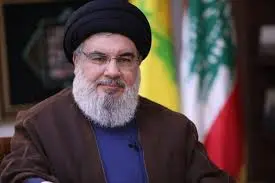
Reports indicate that Hassan Nasrallah, the long-standing leader of Hezbollah, has been killed in an Israeli attack. Nasrallah 65 had led the organization since 1992. His leadership was pivotal in establishing Hezbollah as a significant force in the region.
Hezbollah’s Regional Influence
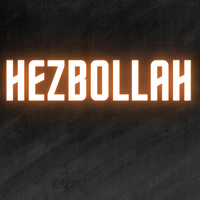
Hezbollah, under Nasrallah’s guidance, gained substantial popularity in Syria and neighboring areas. The group’s military capabilities have long been a concern for Israel and its allies. Nasrallah’s reported death marks a potential shift in the balance of power in the Middle East.
Questions Surrounding the Attack
Intelligence Failure or Precision Strike?
The circumstances of the attack on Nasrallah’s location have raised eyebrows among observers. Some reports suggest the strike was carried out with remarkable precision. Surveillance cameras allegedly remained fixed during the attack, hinting at possible prior intelligence.
Implications for Regional Security
Nasrallah’s reported demise is seen as a significant loss for Hezbollah and its supporters. Iran, a key ally of Hezbollah, is reportedly bracing for potential retaliation. Meanwhile, Israel’s supporters view the operation as a major tactical success.
International Response and Escalating Tensions
United Nations’ Silence Draws Criticism
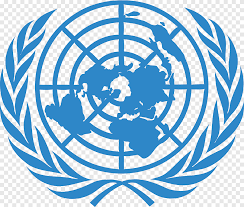
The United Nations has faced criticism for its muted response to the attack. The lack of international condemnation has been noted by various political analysts. This silence may have implications for future conflict resolution efforts in the region.
Iran’s Military Support to Lebanon
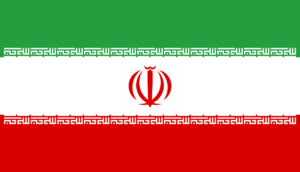
In a significant development, Iran has announced plans to deploy military support to Lebanon. This move is likely to further heighten tensions in the already volatile region. The timing of this announcement is seen as a direct response to Nasrallah’s reported death.
Israel’s Continued Offensive
Israeli forces have conducted numerous attacks on Lebanon in recent weeks. Casualty estimates from these strikes have reportedly reached 800, including women and children. Israel maintains its stance, refusing calls for a ceasefire in the ongoing conflict.
U.S. Reaffirms Support for Israel

Amidst the escalating situation, the United States has pledged continued aid to Israel. This support comes despite growing international concern over civilian casualties. The U.S. position may influence the trajectory of the conflict in coming weeks.
Political Unrest Intensifies in Pakistan
Pakistan Tehreek-e-Insaf’s Evolving Protest Strategy
Shifting Tactics: From Rallies to Street Movements
The Pakistan Tehreek-e-Insaf (PTI) party has adopted a new approach to protests. Moving away from large rallies, they now focus on smaller, widespread demonstrations. This strategy aims to maximize impact while minimizing vulnerability to government crackdowns.
Rawalpindi Protests: A Case Study in Guerrilla Tactics
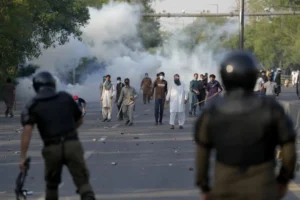
Recent protests in Rawalpindi showcase PTI’s new tactics. Demonstrators employ hit-and-run strategies against police forces. Groups rapidly assemble, clash with authorities, disperse, and then regroup elsewhere. This approach is designed to exhaust law enforcement resources.
Imran Khan’s Strategic Escalation

A Series of Calculated Moves
PTI leader Imran Khan has planned a series of events to build momentum. Rallies in Swabi, Islamabad, Lahore, and Rawalpindi have drawn significant crowds. Each event seems strategically planned to escalate political pressure on the government.
From Jail to Street: Khan’s Continued Influence
Despite his imprisonment, Khan’s influence remains potent. His ability to mobilize supporters from behind bars has surprised many observers. This phenomenon underscores the depth of his popular support and organizational strength.
Government’s Struggle to Contain the Unrest
Challenges in Managing Widespread Demonstrations
Authorities face significant hurdles in controlling PTI’s decentralized protest model. Police resources are stretched thin across multiple locations simultaneously. The government’s traditional methods of crowd control prove less effective against this new strategy.
Restrictions and Their Limited Effectiveness
Government attempts to restrict movement have largely failed to curb protests. Efforts to block roads and limit access to protest sites have been circumvented. PTI supporters demonstrate remarkable adaptability in the face of these obstacles.
Contrasting Political Fortunes: Khan vs. Sharif
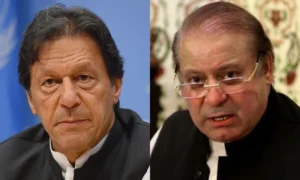
Imran Khan’s Enduring Popularity
Recent events highlight the stark contrast in public support between political figures. Khan’s ability to draw crowds, even in absentia, remains undiminished. His supporters show unwavering commitment despite government pressure.
Nawaz Sharif’s Struggle for Relevance
In contrast, former Prime Minister Nawaz Sharif struggles to rally significant crowds. Public appearances by Sharif have drawn minimal support. This disparity in public engagement poses challenges for Sharif’s political future.
Police Tactics and Media Suppression
Reports of Police Brutality Surface
Allegations of police brutality have emerged from various protest sites. Demonstrators claim to have faced excessive force from law enforcement. These reports fuel further resentment among PTI supporters and sympathizers.
Journalist Detentions and Threats
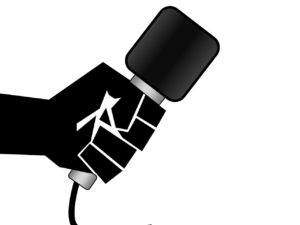
Several media personnel report being detained or threatened by authorities. Notable incidents include the arrest of Khawaja Farooq, the opposition leader in Azad Kashmir. Journalists allege intimidation tactics, including threats of false charges and violence.
Impact on Government’s Reputation
These heavy-handed tactics may be backfiring on the government. Reports of police misconduct are damaging the administration’s public image. The treatment of journalists, in particular, draws criticism from press freedom advocates.
Upcoming Protests and Government’s Anticipated Response
PTI’s Multi-City Protest Plan
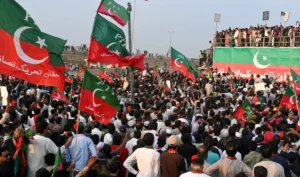
PTI has announced simultaneous protests in Multan, Faisalabad, and Mianwali. This coordinated approach aims to further strain police resources and government attention. The strategic selection of these cities maximizes geographic impact.
Government’s Preparatory Measures
Authorities are expected to implement strict security measures in targeted cities. Past patterns suggest potential road closures and internet shutdowns. The government faces a delicate balance between maintaining order and respecting civil liberties.
Changing Dynamics of Public Resistance
A Shift in Protests Behavior
Journalist Jalil Afridi’s observation highlights a significant change in protests dynamics. Demonstrators now move towards, rather than away from, areas of conflict. This behavior suggests growing public discontent and reduced fear of authorities.
Implications for Political Stability
The changing nature of public resistance poses new challenges for the government. Traditional crowd control methods may prove ineffective against these emboldened protesters. This shift could mark a turning point in Pakistan’s political landscape.
Additional Opposition Movements Gain Traction
Jamaat Islami Joins the Fray
Jamaat Islami, another opposition party, has announced nationwide protests. Their grievances focus on the government’s failure to address inflation and economic issues. This adds another layer of complexity to the ongoing political crisis.
Broadening Base of Dissent
The emergence of multiple protest movements indicates widespread dissatisfaction. Different groups unite in their criticism of the current administration. This convergence of opposition forces amplifies pressure on the government.
Sugar Industry Scandal Unveils Deep-Rooted Corruption

Historical Context: The 2015 Sugar Policy
Origins of the Controversial Regulation
In 2015, the government implemented policies highly favorable to sugar mill owners. These regulations allowed mill owners to profit significantly from electricity generation. The policy linked pricing to international coal prices, not local bagasse costs.
Beneficiaries of the Original Policy
The 2015 policy primarily benefited a select group of politically connected individuals. Many of these beneficiaries had close ties to the ruling party at the time. This arrangement raised questions about potential conflicts of interest.
Policy Reversal and Subsequent Legal Battles
Imran Khan’s Government Attempts Reform
Upon coming to power in 2018, Imran Khan’s government reversed these policies. They cited unfair practices and potential economic harm as reasons for the change. This move was seen as part of Khan’s anti-corruption agenda.
Sugar Mill Owners Fight Back
Affected sugar mill owners promptly challenged the policy reversal in court. The legal battle highlighted the entrenched interests in Pakistan’s sugar industry. The case was eventually referred to the National Electric Power Regulatory Authority (NEPRA).
Recent Developments Reignite Controversy
Current Government Reinstates Old Policy
The present administration has reverted to the pre-2018 policy. This decision has reignited debates about industry influence in policy making. Critics argue that the move prioritizes private interests over public benefit.
NEPRA’s Role and Decision
NEPRA has approved substantial payments to sugar mill owners under the reinstated policy. These payments are retroactively applied to 2022, with an additional 5% increase. The decision has sparked outrage among economic experts and opposition parties.
Financial Implications and Beneficiaries
Scale of Payouts Raises Eyebrows
The total payout amounts to billions of Pakistani rupees. This substantial sum is being distributed among a relatively small group of mill owners. The scale of these payments has raised concerns about fiscal responsibility.
Notable Recipients
Several politically connected individuals and families stand to benefit significantly. Key beneficiaries include Javed Kayani, Salman Shahbaz, and Makhdoom Umar Shahriyar. Many of these individuals have long-standing ties to Pakistan’s political elite.
Impact on Energy Sector and Economy
Critics Warn of Rising Electricity Costs
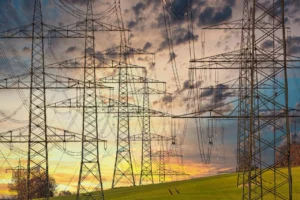
Economists argue that these payments will inevitably lead to higher electricity costs. The burden of these increased costs is likely to fall on consumers. This situation could exacerbate existing economic challenges in Pakistan.
Broader Economic Implications
The sugar industry scandal highlights ongoing issues of corruption and cronyism in Pakistan. It raises questions about the government’s commitment to economic reform. The incident may also impact investor confidence in Pakistan’s energy sector.
Conclusion: Pakistan at a Crossroads
Escalating Political Tensions
Pakistan faces a multifaceted crisis as protests grow and scandals emerge. The PTI’s evolving protest strategy continues to put pressure on the government. Economic issues and corruption allegations further complicate the political landscape.
Potential for Further Escalation
The possibility of Imran Khan initiating a hunger strike looms large. Such a move could dramatically escalate tensions across the country. The government’s ability to manage widespread unrest is increasingly questioned.
Challenges for Governance and Stability
The current administration faces significant challenges in maintaining political stability. Balancing law enforcement with civil liberties becomes increasingly difficult. The government’s response in coming weeks may prove crucial for Pakistan’s future.
International Implications
Pakistan’s internal turmoil has potential ramifications beyond its borders. Regional stability and international relations may be affected by ongoing developments. The international community watches closely as events unfold in this strategically important nation.
